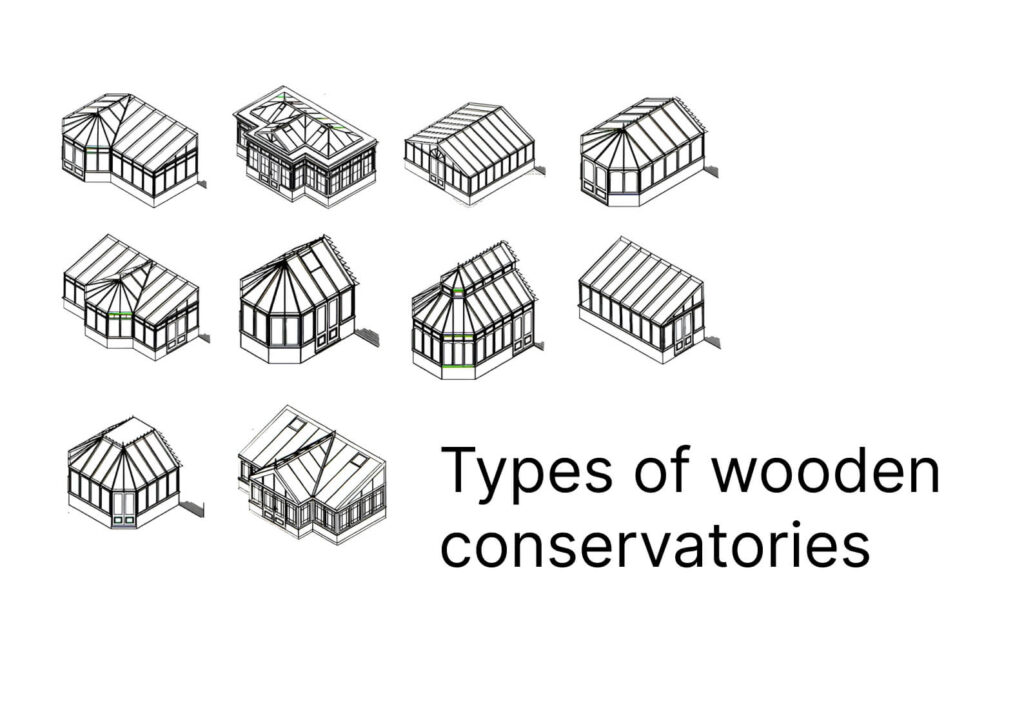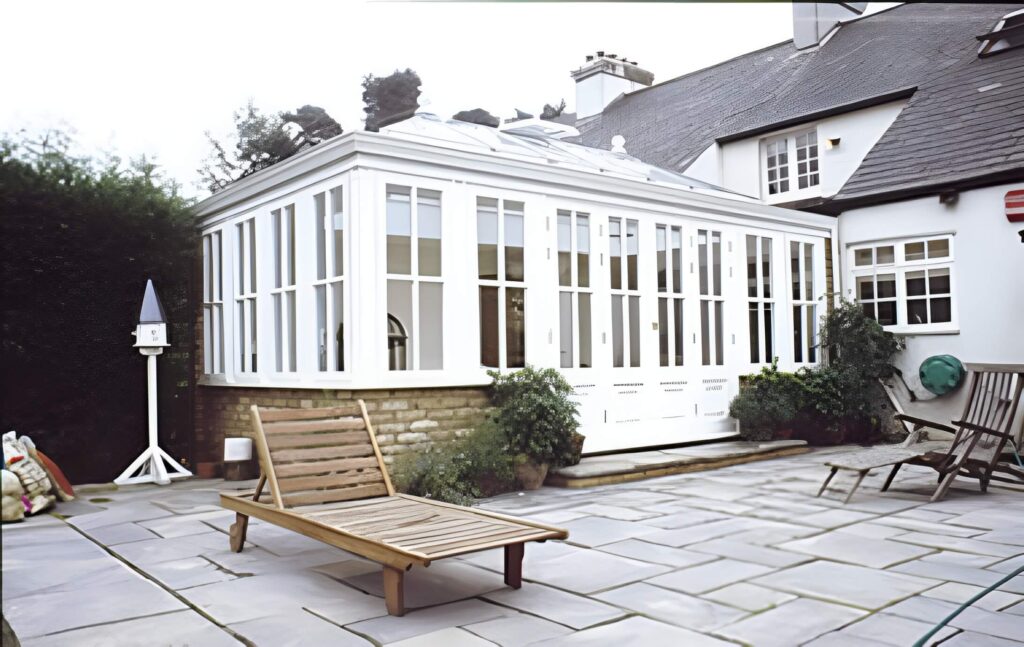There’s something truly magical about oak conservatories. They bring a touch of natural charm and sophistication to any home, blending classic elegance with practical living space.
Whether you’re drawn to their natural beauty or intrigued by their durability, oak conservatories are a top choice for homeowners looking to create additional space with a bit of flair.
But, like any big investment, they come with their pros and cons. Let’s explore what makes oak conservatories so appealing — and where they might fall short.
Oak conservatory design styles
Oak conservatories offer a wide range of design possibilities, making them a versatile choice for homeowners with varying tastes. Whether your taste leans towards traditional elegance or modern simplicity, here are some of the most popular styles to explore:
1. Traditional styles
Oak is often associated with classic designs, making it an ideal choice for Victorian or Edwardian-style conservatories. These designs typically feature intricate woodwork, decorative details, and pitched roofs. For homeowners who appreciate timeless elegance, a traditional oak conservatory can complement period properties or lend a touch of sophistication to modern homes.
2. Contemporary designs
Modern oak conservatories often focus on clean lines and simplicity. Features like flat roofs, large glass panels, and minimalistic oak frames give these designs a sleek, understated look. Adding elements such as bi-fold doors or frameless glazing enhances the connection between the indoor and outdoor spaces, creating a light-filled, open feel that suits contemporary living.
3. Blended designs
For those who want the best of both worlds, blended designs combine traditional oak craftsmanship with modern features. Think lantern roofs for added height, paired with oak frames that highlight the natural warmth of the wood. This approach allows for a unique and personalised style that suits both heritage and newer properties.
4. Rustic and countryside charm
If your home leans toward a rural or rustic aesthetic, oak conservatories with exposed beams and natural finishes fit the bill perfectly. These designs emphasise oak’s natural character and create a warm, inviting space that blends seamlessly with garden rooms or outdoor settings.
Advantages of oak conservatories
Timeless aesthetic appeal
Oak has a natural beauty that stands out. Its rich tones and grain patterns make it a good fit for a range of traditional and modern architectural styles. Over time, seasoned oak develops a distinctive patina, adding depth and character. Whether the conservatory complements a period property or adds warmth to a contemporary design, oak often enhances the overall appearance of a home.
Sustainable and eco-friendly
As a natural material, oak is renewable and, when responsibly sourced, has a lower environmental impact compared to synthetic options like uPVC. Thanks to its durability, you need fewer replacements, making it a more sustainable choice. Additionally, oak typically requires fewer treatments than other materials, making it an environmentally considerate choice.
Customisation options
Oak offers flexibility in design. It can accommodate different roofing styles, from lantern roofs to flat roofs, and structural features like dwarf walls or bi-fold doors. This versatility allows for tailored designs that fit the specific layout and style of the property, whether it’s a traditional conservatory or a more contemporary design.
Natural insulation
Oak naturally offers thermal insulation, making it easier to maintain comfortable indoor temperatures. Paired with modern glazing options like solar control glass, it can provide a comfortable space during the summer months and retain heat in the winter months. This combination can also contribute to lower energy usage over time.
Increased living space
A conservatory made with oak creates a usable extension to your home, whether as a garden room, dining area, or office. Adding extra space improves both the practicality of your home and its connection to the surrounding outdoor environment. Oak’s sturdy nature allows for larger frames, which can incorporate elements like wide glazed units or roof vents for better light and airflow.
Disadvantages of oak conservatories
Higher initial cost
One of the main drawbacks of oak conservatories is their cost. The materials and craftsmanship involved in constructing oak frame structures often make them more expensive than options like uPVC or aluminium. Customisation, additional features like underfloor heating, and treatments for durability further increase the total expense.
Ongoing maintenance
Oak requires regular care to protect it from weathering. Exposure to moisture and sunlight can cause warping, cracking, or insect damage if the wood isn’t treated periodically. A weathertight seal and proper treatments are necessary to keep the structure in good condition. This level of maintenance might not suit everyone.
Planning and building approvals
Larger oak conservatories or those added to listed properties often require planning permission or compliance with building regulations. This includes factors like the conservatory’s size, its proximity to property boundaries, and its integration with existing structures. Consulting with your local Building Control department ensures the project meets the necessary guidelines.
Longer build times
Crafting and installing an oak frame conservatory is a more detailed process compared to materials like aluminium. Preparing the wood, assembling the frame, and fitting custom features take time. Weather conditions or structural complexities can also cause delays during the construction process.
Style compatibility
Although oak has broad appeal, it doesn’t always fit well with very modern or minimalist designs. Homes with sharp, contemporary architectural styles might struggle to match the warm tones of oak with their existing materials. Thoughtful design planning can help bridge the gap, but it’s something to keep in mind.
Cost factors to consider
If you’re considering an oak conservatory, the cost can vary widely depending on several factors:
- Size and complexity: Larger conservatories or ones with intricate features like P-shaped or T-shaped buildings will naturally cost more.
- Materials and features: High-grade seasoned oak, advanced glazing methods, and roofing elements like roof tiles or flat roofs add to the expense.
- Labour and craftsmanship: Skilled installation of custom designs, including architectural features or detailed joinery, requires more labour hours.
- Planning and compliance: Obtaining planning permission or ensuring the build adheres to building regulations can involve additional fees.
- Energy efficiency features: Upgrades like thermal insulation or modern glazing options may increase upfront costs but can provide long-term savings on energy bills.
FAQs
How long do oak conservatories last?
With proper maintenance, oak conservatories can last 50 years or more in many cases. Regular sealing and proper weatherproofing are crucial for preserving oak’s strength and appearance over time.
Is planning permission required to build an oak conservatory?
In many cases, planning permission isn’t needed if the conservatory meets permitted development rules. However, larger structures or those in protected areas often require approval. Checking with your local planning authorities is essential before starting work.
Are conservatories banned in the UK?
No, conservatories aren’t banned. However, modern building regulations require them to meet stricter energy efficiency standards, which has shifted the way they are designed and built.





